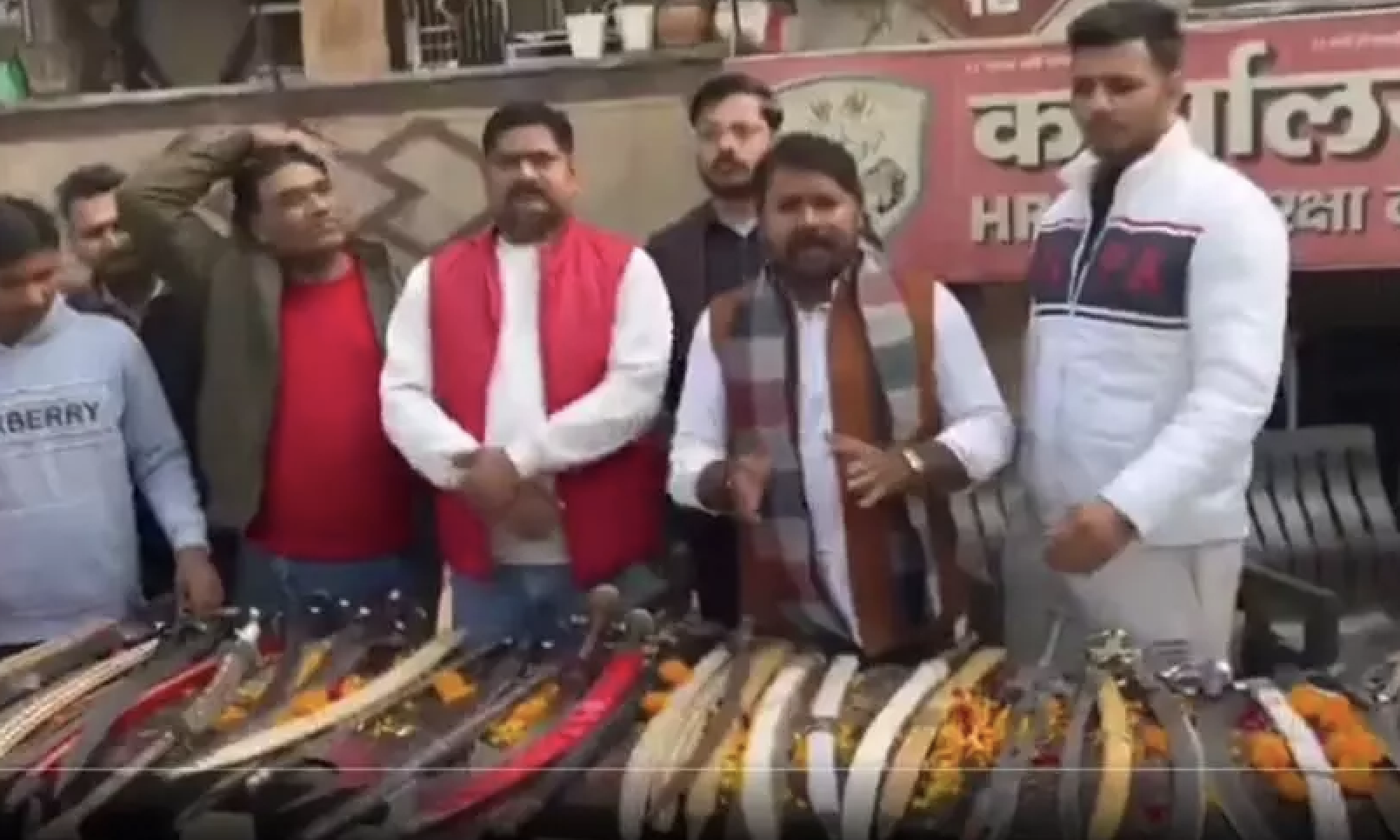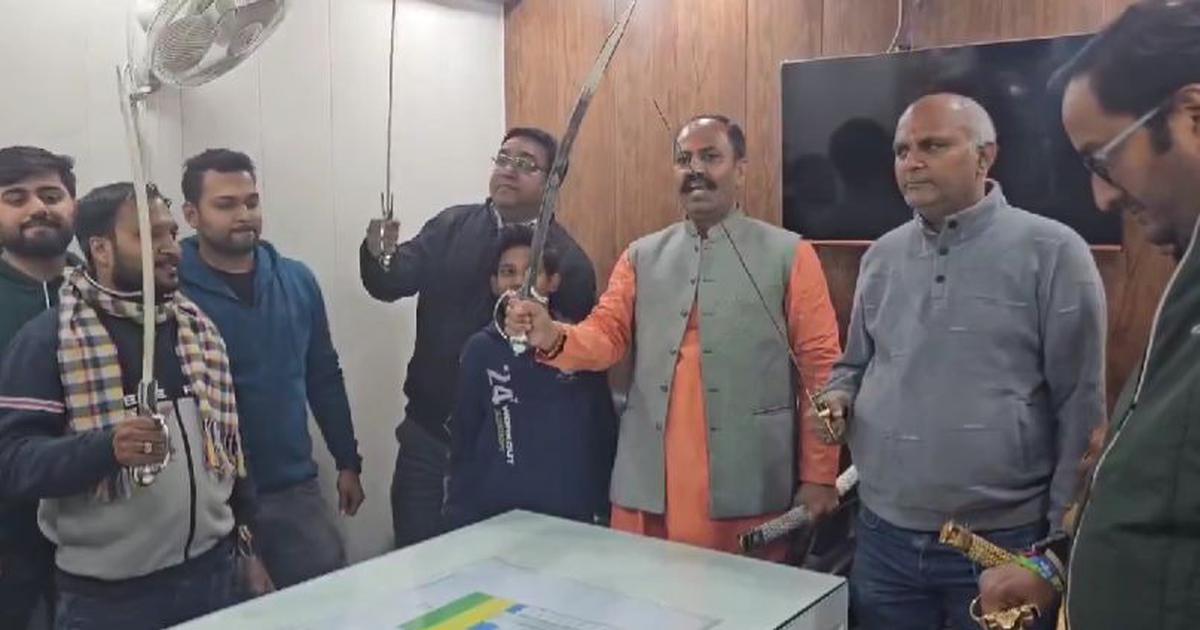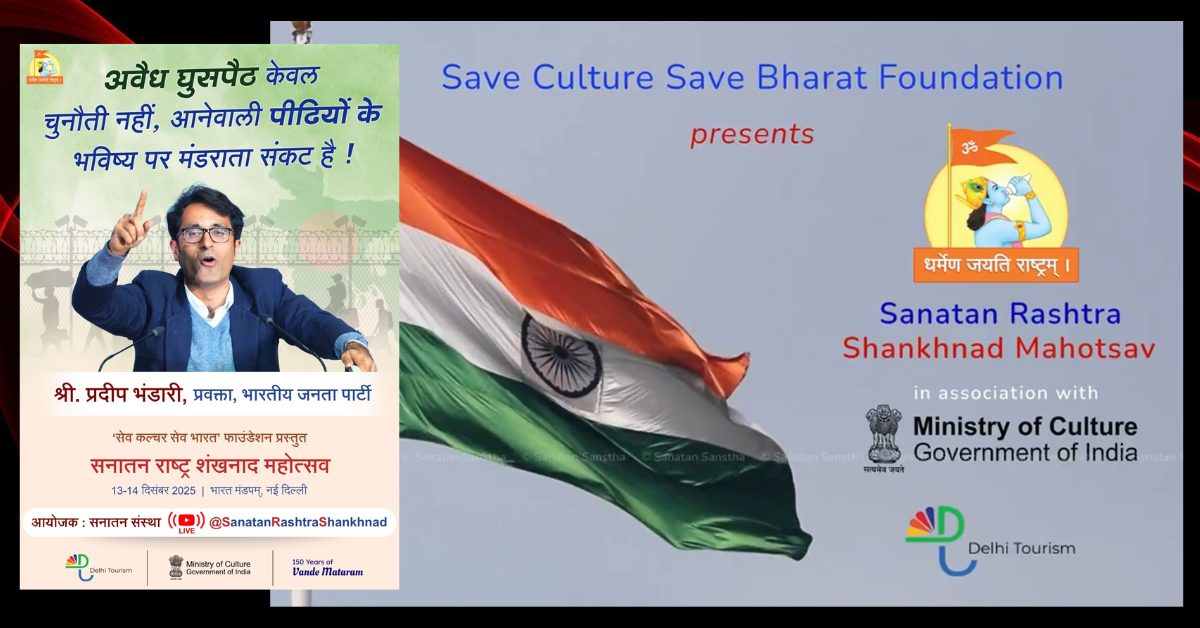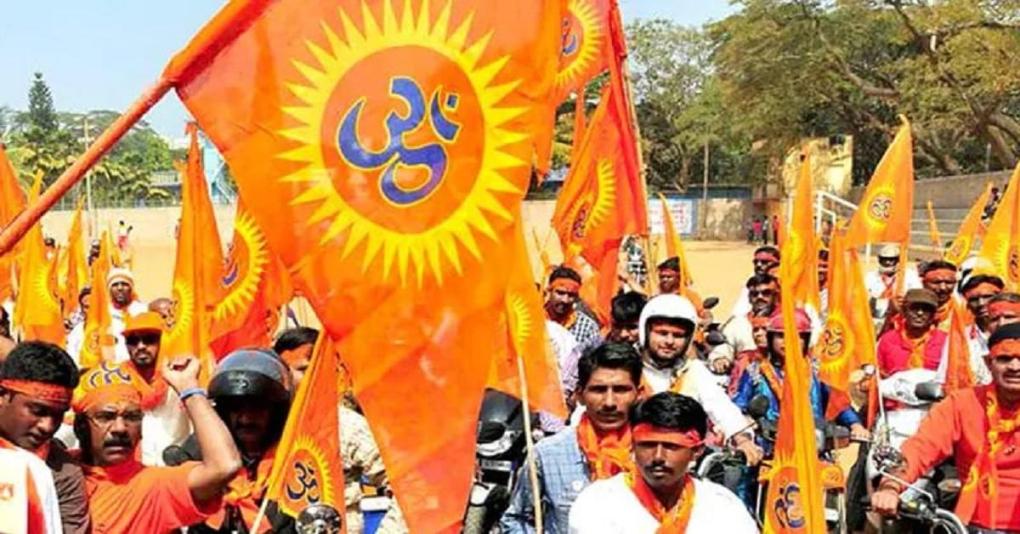
On December 28, the Jammu and Kashmir Police held an exhaustive press conference about its investigation into the alleged gunfight in Hyderpora area of Srinagar on November 15. The special investigation had been announced after the families of three of the four men killed in the gunfight accused the security forces of killing innocent civilians.
The police investigation stopped short of declaring the men were civilians and absolved the security forces of any wrongdoing. The police said one of the civilians, Altaf Ahmad Bhat, the owner of the building in which the shootout took place, was taken as a “human shield” by the militants and killed in crossfire. The other, Mudasir Gul, was killed by a Pakistani militant hiding in the building.
However, the police maintained that the third man killed in the encounter, Amir Ahmad Magray, was a militant who had provided logistical support to the foreign militant. Magray’s family denies the allegation.
The ‘gunfight’ in November
On the evening of November 15, the police announced that a gunfight had broken out between militants and security forces in Hyderpora. According to a statement issued later, a joint team of the police, the Army’s 2 Rashtriya Rifles and the Central Reserve Police Force had launched a cordon-and-search operation based on a “specific input” about the “presence of terrorists in an illegal call centre rented for business in a private building”.
The first information report, or FIR, in the encounter, accessed by Scroll.in, showed that the operation had been launched on the basis of information provided by the Army.
On the morning of November 16, the police said four men were killed in the gunfight, two of them militants. The police identified the militants as Haider, a Pakistani national, and Amir Ahmad Magray from the Banihal area of Jammu’s Ramban district.
The two other men killed in the gunfight were identified as Altaf Ahmad Bhat and Mudasir Gul. Bhat, the owner of the building in which the alleged encounter took place, ran a construction material shop from the ground floor of the structure. Gul was a dentist-turned-real-estate-businessman who rented the first floor of Bhat’s building for his offices.
The families of the victims say that Magray was working as an office assistant at Gul’s office and was living in the building.
The police initially said that both Bhat and Gul were “terror associates”, but later dropped this reference. The statement issued on November 16 said that Bhat and Gul were “called to accompany” the security forces in order “to show the suspect call centre” in the building. Both were killed when the militants hiding in the building “started firing indiscriminately” at the security forces and the two civilians.
It did not suggest Bhat was involved in militant activities. It did, however, claim that Gul had “facilitated” the escape of a foreign militant after he had opened fire on the police in Srinagar’s downtown area on November 14.
All four men were hurriedly buried in a graveyard in North Kashmir’s Handwara area, about 80 km from Srinagar, on the morning of November 16. While the police claimed that the families of Bhat and Gul were asked to take part in a discreet funeral in Handwara, both the families said they were not informed about the burials.
Inconsistent versions
The families of the victims rejected the findings of the special police investigation and accused the authorities of shielding the killers. They were also quick to allege discrepancies in the police version of events.
In the statement issued on November 16, for instance, the police had said that both Bhat and Gul “received critical gunshot injuries” when they were on the top floor of the building along with a search party of the security forces.
“As the search party approached towards a room in top floor of the building, the hiding terrorists started firing indiscriminately towards the party which was retaliated [sic],” the statement read. “However, in the initial exchange of fire, both the individuals accompanying search party received critical gunshot injuries and succumbed to their injuries.”
But as the families of the victims pointed out, at the press conference on December 28, the police said something else. According to Sujit Kumar Singh, deputy inspector general of police, Central Kashmir, who was heading the Special Investigation Team, or SIT, Gul was killed by the “foreign terrorist in the attic of the building” while Bhat’s body was “found on the staircase” connecting the ground floor and the first floor of the building.
Further, Singh maintained that the security forces never went to the attic, or opened fire in that part of the building. He claimed both the civilians had “volunteered” to go into the building as they were confident that there was no one inside. He implied that they went alone. “They didn’t even ask for any help from the security forces like wearing bulletproof etc., just in case if there is something,” he said.
At the press conference, Singh showed reporters footage captured on a closed-circuit television camera installed inside the room that served as the call centre. The last time Bhat and Gul were seen alive and together was around 6.26 pm when they exited the call centre and closed the door behind them, he said. “At 6.36, foreign terrorist is seen escaping from the building and then he is seen hit by a bullet afterwards,” Singh added.
What happened inside the building in those 10 minutes is something even the police are not sure about. “What’s the story of those 10 minutes?” Singh told reporters. “Nobody saw what happened as there were no eye-witnesses and cameras inside the rooms.”
According to Singh, the police reached the conclusion that the militant had killed Bhat and Gul after they surveyed the site and carried out their investigation. The ballistic examination report of firearms and bullets is still awaited from the laboratory, he added.
‘Why did they let him in?’
But Bhat’s relatives are not convinced by the police’s claim that he volunteered to go into the building. In any case, if he did, why was he allowed to, they ask.
“They don’t even allow the family members of a militant to go inside a building and convince him to surrender face to face despite knowing that they are related to the hiding militant,” said journalist Saima Bhat, who is Altaf Ahmad Bhat’s niece.
She was referring to a common practice by security forces in Kashmir under which they bring the families of militants to encounter sites where they are asked to appeal to their kin to surrender. The appeals are made through loudspeakers at a safe distance from the site of the encounter.
“How did they allow civilians to go inside when they had inputs that someone was inside the building?” Saima Bhat asked.
According to her, the security forces failed to ensure her uncle’s safe exit when the alleged gunfight broke out. “My question is simple: if they knew there is a civilian inside the building and who has been made a human shield, why did they fire towards him?” Saima Bhat asked. “The militant only had a pistol and he was alone but security forces were in hundreds and they had cordoned off the entire area. Despite that, they fired on him. Was it so difficult to save my uncle?”
Missing documents
During its investigation, police said they had asked the family of Bhat, who owned the building, to produce documents related to the building – rent agreements with the tenants, police verification reports of the tenants, other clearances – to help in the investigation. So far, the family has been able to produce a “couple of documents in its response that do not answer the questions of the investigation”, Singh said.
The family said they submitted some electricity bills, a copy of an insurance policy of the building and revenue papers of the land on which the building stands. “We checked everywhere for more documents demanded by the police,” said Bhat’s niece, Saima. “Whatever we could find, we gave it to them.”
According to Bhat’s family, he had an office-cum-prayer-room on the first floor of the building where he kept spare stock from his shop and all the documents related to his business. The family suspects that the documents demanded by the police were most likely kept by Bhat in the same room. However, they are now nowhere to be found.
“The building was in the possession of police for 43 days,” Saima Bhat pointed out. It was handed back to the family on the morning of December 28, the day the police held a press conference about their findings.
“When we entered that room, all the documents related to my uncle’s business and bills etc. were lying scattered on the floor. The police had opened the lock of a steel cupboard in which all these documents had been kept in sequence by my uncle,” Saima Bhat alleged.
Besides Gul, Bhat had also rented out a room on the first floor to a businessman involved in information technology. Scroll.in accessed a copy of the rent agreement between Bhat and the owner of the information technology solutions shop. “If the tenant has a copy of the rent agreement, why is the landlord’s copy missing?” a member of Bhat’s family asked. “The only reason the tenant has a copy of the rent agreement is because he had kept it at his home.”
What about the rent agreement between Gul and Bhat? “We contacted Gul’s family and asked if they had found any at his home,” said Saima Bhat. “They said he would keep all his documents at his office [Bhat’s building]. So far, they haven’t been able to find any.”
Statements by witnesses
During the investigation, police said they had come across evidence of Gul’s links with the militants killed in the building on November 15. “Amir Magray used to stay in a small chamber in the room where Dr Mudasir Gul used to sit,” said Singh, the head of Special Investigation Team. “We have a CCTV footage which showed Amir and the foreign terrorist in the same chamber where he [Gul] used to sit.”
The Pakistani militant was the same man who was involved in an attack on security forces in Srinagar’s downtown area on November 14, Singh said. “The cop, who was injured, and his other companion, who had closely seen the terrorist during the attack, confirmed that the Pakistani militant killed in Hyderpora was the same,” Singh said. “He clearly identified him before the magistrate.”
The foreign militant was identified by three “protected witnesses” as well, the officer claimed. “The protected witnesses are familiar with the locality and building,” Singh said. “They had close relations with Dr Mudasir Gul.”
According to Singh, the witnesses said the Pakistani militant had been living in the building for about a month and would even step out sometimes. Since he would speak neither Kashmiri nor Dogri, “when they heard his language, on that basis, they felt he might be from outside”, Singh said.
The police also claimed that the foreign militant was seen travelling around Srinagar in Gul’s car. “We have witnesses of that as well,” said Singh.
According to the police, the Pakistani militant shot dead Gul in the attic of the building on November 15. Although there are no witnesses or closed-circuit television footage, the police feel Gul was killed on the suspicion that he had tipped off the security forces about the militant in the building.
“…It seems that the terrorist immediately got orders from outside…,” said Singh. “On the basis of this doubt, he killed Dr Mudasir Gul in the attic.”
After closing the door of the call centre at 6.26 pm – the last time Bhat and Gul were seen alive and together in the closed-circuit television footage – Gul, according to the police, went to the attic of the building where the foreign militant was hiding. “…You have seen Mudasir Gul’s spectacles lying on a table in the hideout,” Singh said, showing images taken by the police during its investigation. “It means after the door closes, Dr Mudasir Gul, who knew that there was someone in the building, goes to the hideout, takes out his spectacles and sits there. A person is already present there because there was some half-eaten food there. It seems there’s a confrontation between Gul and the foreign militant after which he got orders to kill him.”
Gul’s family members described the police investigation as a “cover up to give a clean chit” to the security forces. Describing him as “a family man”, Humaira Mudasir, Gul’s wife, said: “He had everything in life… The time he was killed, he had construction work going on at five places. How would he have found time to do all this?”
She also said it was implausible for a militant to be hidden in a space that was frequented by dozens of people every day. “It was a real-estate office where around 50 different people would visit on a daily basis. How can you hide someone in such a place?” she asked. “Besides, his office was on the highway where there are dozens of security personnel deployed throughout the day. It is simply not possible.”
While the police said Gul was the first to be killed in the purported gunfight on November 15, his body was the last to be retrieved. The police did not officially announce his death till the morning of November 16.
Explaining the reason for this, the police said at the press conference that the bodies of the three other men were retrieved within an hour-and-a-half after the firing started at 6.36 pm as one of them was shot outside the building while two others were killed in the ground floor of the building.
“But Dr Mudasir Gul’s body could not be found,” Singh said. “To ascertain his body, we searched the building by dog-mounted cameras and by that way, we got to know that his body was lying down in the attic…It was around 12 in the night. It took us two or three hours for Dr Mudasir Gul’s body to be sent to PCR [Police Control Room].”
The police added that Gul was killed by pistol fire because the blank cartridges of a 9 mm pistol were found lying next to his body.
But Gul’s family saw something more than bullet marks on his body. “His face had small bruises as if someone had beaten him,” alleged his wife Humaira. “Around his neck there was a mark of a strap, as if he was strangulated.”
The police said the postmortem reports of all the men killed in the incident revealed firearm injury as the cause of death. Two pistols, four magazines and some bullets were recovered from the site.
‘The militant’
The investigation in the case of the third man, Amir Ahmad Magray, took the officials to North Kashmir’s Bandipora district. On the morning of the encounter, the police said, Magray had sent a picture of himself with a pistol to someone who “was very close and special to him”.
“According to the statement of that protected witness, the person asked Amir why he sent the picture to which he replied ‘I just wanted to show you,’” said Singh on December 28. “While his face is hidden with a sticker, the protected witness knows him so well that he confirms it’s Amir only.”
Another protected witness, according to the police, said Magray was pressurising him to find a safe home for him in Bandipora. The third potential witness, the police added, was someone who had seen the Magray at a house in Bandipora along with two other local militants. The two local militants were killed in the same house in September.
The investigators also went to the religious seminary in Bandipora where Magray pursued a religious education course till 2018. According to Singh, Magray’s classmates said he was an “undisciplined” boy who would not return to school on time from vacations.
“Recently, they said, Amir’s behavior had changed and he had become careless,” said Singh. “He also used to have confrontations with teachers over prayers etc.” The police also said Magray had taken up smoking cigarettes and used to “talk big things like buying a car and constructing a house”.
Besides, the investigation found that Magray would frequently travel to Bandipora from Srinagar. “He had travelled to Gurez valley in Bandipora at least twice which is a known area from where the infiltration takes place,” Singh added.
After the attack on security forces took place on November 14 in downtown Srinagar, the police said Magray and the Pakistani militant were seen inside Magray’s chamber, which was on the side of Gul’s office.
“Around 11.30 the same night, the foreign terrorist gets up…and takes out some metallic item from his back and keeps it on the ground,” Singh said. “When we stilled the footage, it was clear that it’s a pistol. Therefore, it is proven that on November 14, the foreign terrorist was with Amir.”
Magray’s family says he was planning to get married in Bandipora as he was seeing someone there. “We are not convinced by the police’s inquiry,” said Mehmoona Begum, Magray’s sister. “For us, justice will happen before the court.”
The family has already approached the High Court of Jammu and Kashmir and Ladakh to seek the mortal remains of Magray. “If the police show us some concrete proof of my brother’s involvement, we will be convinced,” said Mehmoona Begum. “We haven’t been showing anything substantial so far. Now, it’s the court that will decide.”
This story first appeared on scroll.in






